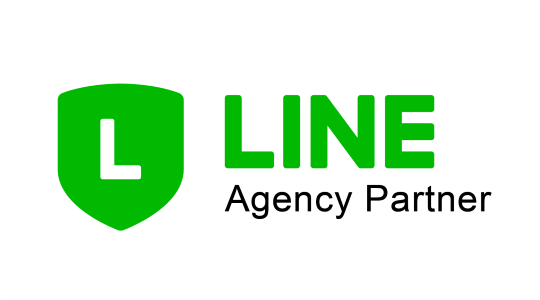How to Build a Successful Online Marketing Strategy in 5 Steps
Deprecated: Return type of TagFilterNodeIterator::current() should either be compatible with Iterator::current(): mixed, or the #[\ReturnTypeWillChange] attribute should be used to temporarily suppress the notice in /home/prim4992/primal.website/thdev2/wp-content/plugins/easy-table-of-contents/includes/vendor/ultimate-web-scraper/tag_filter.php on line 1149
Deprecated: Return type of TagFilterNodeIterator::next() should either be compatible with Iterator::next(): void, or the #[\ReturnTypeWillChange] attribute should be used to temporarily suppress the notice in /home/prim4992/primal.website/thdev2/wp-content/plugins/easy-table-of-contents/includes/vendor/ultimate-web-scraper/tag_filter.php on line 1159
Deprecated: Return type of TagFilterNodeIterator::key() should either be compatible with Iterator::key(): mixed, or the #[\ReturnTypeWillChange] attribute should be used to temporarily suppress the notice in /home/prim4992/primal.website/thdev2/wp-content/plugins/easy-table-of-contents/includes/vendor/ultimate-web-scraper/tag_filter.php on line 1154
Deprecated: Return type of TagFilterNodeIterator::valid() should either be compatible with Iterator::valid(): bool, or the #[\ReturnTypeWillChange] attribute should be used to temporarily suppress the notice in /home/prim4992/primal.website/thdev2/wp-content/plugins/easy-table-of-contents/includes/vendor/ultimate-web-scraper/tag_filter.php on line 1144
Deprecated: Return type of TagFilterNodeIterator::rewind() should either be compatible with Iterator::rewind(): void, or the #[\ReturnTypeWillChange] attribute should be used to temporarily suppress the notice in /home/prim4992/primal.website/thdev2/wp-content/plugins/easy-table-of-contents/includes/vendor/ultimate-web-scraper/tag_filter.php on line 1139
Deprecated: Return type of TagFilterNodeIterator::count() should either be compatible with Countable::count(): int, or the #[\ReturnTypeWillChange] attribute should be used to temporarily suppress the notice in /home/prim4992/primal.website/thdev2/wp-content/plugins/easy-table-of-contents/includes/vendor/ultimate-web-scraper/tag_filter.php on line 1164
Like so many aspects of our lives, the majority of marketing activity is now happening online. Customers spend hours every day using online platforms for both business and personal activities, so it is important that your business can reach customers by developing a solid online presence wherever they spend their time online.
This guide will walk you through the five steps that you can take to build a successful online marketing strategy for your business.
Table of Contents
What is Online Marketing?
As we have discussed in the past, online marketing is the practice of using digital technologies to spread information about your business, products or services to bring about positive outcomes for your company.
The Benefits of Online Marketing
There are many reasons why investing in online marketing is a great decision for your company. Not only is online marketing less expensive than many traditional forms of marketing, but it never sleeps, so you can easily reach customers worldwide, 24 hours a day.
Social media allows you to build lasting relationships with your customers and make sure that information about your business is always easily accessible. In addition to this, when compared to traditional marketing techniques, digital marketing avenues allow you to monitor exactly how effective various techniques are and continually refine your approach.
What is an Online Marketing Strategy?
An online marketing strategy is a detailed plan that helps ensure your marketing is as effective as possible.
Your strategy should help you consider major factors influencing your business and customer base, so you know the best places to start. It should also allow you to evaluate results as you go, so that you can make informed adjustments along the way.
Now that you know what a digital marketing strategy is and why it’s important, let’s dive into the steps involved in creating a quality online marketing strategy.

Step 1: Set Your Marketing Goals
The first step to any great marketing strategy is to identify what you want it to do for your company. You will need to think about where your business is at and where you envision it in the future. If you already have long-term goals for your company’s growth and development, make sure that your online marketing goals complement and support those existing goals.
Here are a few questions to think about when creating these goals:
- Do you want to reach a new or expanded customer base?
- Do you want to increase revenue?
- Are you looking to change your branding or improve brand awareness?
- Are you promoting new products, services or special promotions?
- Do you want to improve customer satisfaction?
- Do you want to increase website traffic?
- Are you looking to upsell current customers?
SMART Goals
When you are setting your online marketing business goals, it is important that they are as focused as possible, allowing you to turn them into actionable strategy items.
A great way to create well-defined goals is to use the SMART goals acronym:
- S – Specific, it should be very clear what you want to accomplish
- M – Measurable, you should be able to quantify the success of any goals you set
- A – Achievable, make sure your goals are within the realm of possibility for your company
- R – Relevant, your goals should fit into the larger context of your business and its needs
- T – Time-bound, be sure you’ve marked a set amount of time in which to meet your goal
Make sure that you record the list of goals that you’ve developed, so that you can revisit it again later in the process.
Actionable Goal Examples
Below are some examples of specific, actionable goals that you could use to begin an online marketing campaign.
- Improve the company’s Google rating by at least one star within the next month
- Gain 100 new social media followers in 2 weeks
- Increase website traffic to 500 visitors per week in the next 2 months
- Increase sales by 15% within 3 months
Step 2: Research Your Market
Once you’ve clearly stated what you’d like to achieve through your digital marketing campaign, you will need to do a bit of market research to understand who you are trying to reach and their online behaviour.
Understand Your Customer Base
The cornerstone of your market research will be understanding your target customer base. Who are they? What online platforms do they use? How do they engage with businesses that they follow or buy from? What kinds of media and marketing content do they find appealing?
You can find answers to these questions in a few different ways:
- Customer surveys
- Research user statistics
- Existing customer reviews
- Website and social media traffic data
Research Your Competitors
Another key aspect of market research is to look at your competitors’ online presence. Following your competition is not only a great way to see what you’re up against, but it can also help you gain insights about what works in your market.
Here are some questions to consider when analysing your competition:
- What is the competition doing right? You definitely want to take notes on elements of your competition’s online marketing strategy that are effective and gain them business. You will need to do these items as well as they do in order to stay relevant.
- What is the competition doing wrong? If there are areas of your competitors’ online marketing strategy that are sloppy or ineffective then you have a great picture of what not to do. You can also keep these areas in mind as great ways to make your strategy better and help your business stand out from the competition.
- What is your unique value proposition? When looking at all the other players in the market, think about what makes your business unique. What do you bring to the table that no one else does? These are the features of your company that you want to highlight in your online marketing campaign.

Step 3: Identify Your Best Online Marketing Tools
Now that you know what you want your strategy to do and who you would like to reach, you need to examine the tools available to you and select the best ones for your target audience groups.
Digital Marketing Tools List
There are a wide variety of tools available to advertise your business online, including:
- Email marketing
- Social media marketing
- Website optimisation and A/B testing
- Search engine optimisation (SEO)
- Content marketing
- Video marketing
- Virtual events
- Pay-per-click advertising (PPC)
Pick the Right Tools For the Job
You should think about which of these options would be manageable for your business with your current skill set and financial resources. In addition, you should consider which of these approaches will be useful, interesting, and enjoyable for your target customers.
Step 4: Write Your Detailed Online Marketing Strategy
Now with the information you’ve gathered so far, you can finalise your digital marketing strategy. Using the goals you’ve set and the tools you’ve selected to realise them, it’s time to write out a detailed plan of action.
As an example, let’s take a small company that sells artisan soaps. They have a physical shop, but want to promote online orders. Their goal is to increase awareness of their brand online and widen their customer base. This company could add the following steps to their marketing strategy:
- Revisit their online shop to make sure it has intuitive UX and UI
- Create weekly Facebook and Instagram posts to highlight new products every Monday and Thursday with at least one picture and 30-50 words
- Send out monthly emails to current customers that list special online promotions
Test Strategies Before Full Implementation
For many digital marketing strategies, especially those that may take time or money to put into action, you can consider doing a small test run before implementing it on a larger scale. This will give you an idea of how effective this technique will be for your company before you invest more heavily.

Step 5: Implement and Evaluate Your Plan
Your strategy is now complete and you are ready to take action! This is the most exciting part of any strategy planning process, but implementation is not the end. A key factor in making a successful online marketing strategy is monitoring its effectiveness and making adjustments as needed.
Once your plan is put into motion, set time to record weekly and monthly results. You may find that one avenue of engagement receives more positive feedback and want to invest more heavily in that technique than in others. Or you may find that the ways you chose to approach your strategy aren’t showing measurable results and that you need to make some adjustments.
Exercise Patience and Think Long-term
Like any marketing strategy, it can take time to see results from an online marketing campaign, especially if you are beginning on your own. The world of online marketing is complex and ever-evolving, so you may need patience to find the sweet spot for your business.
Even if you put a good deal of research into planning your campaign, you will still learn a lot about the digital marketing process after putting your strategy in motion. Trial and error is often a necessary part of finding out what does and does not work for your unique business and customer base.
This is why evaluation and adjustment of your strategy as you go is an integral part of online marketing. If you don’t see immediate results, don’t lose hope! Continue to move forward and keep striving toward your long-term goals.























Join the discussion - 0 Comment